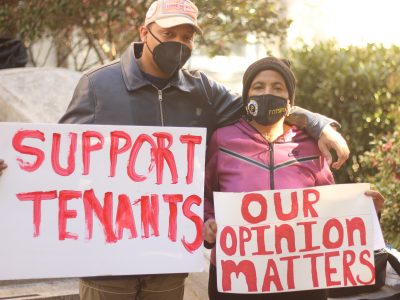by Jordan Green
Real-estate developers express opposition to mandates for street connectivity as the city of High Point undertakes a rewrite of its development ordinance.
Planning staff with the city of High Point, representatives of the real-estate development industry and consultants are going through the city’s development ordinance line by line and rewriting it in a conference room on the third floor of City Hall known as the “fishbowl.”
A summary of a section concerning development standards that was circulated during the committee’s meeting on May 21 included comments and questions from industry representatives in black, responses from staff and the consultants in blue, and items requiring further discussion in red.
Street connectivity emerged as one of the biggest items of contention between staff and the development industry, and the question could come before the mayor and city council, who must ultimately approve any changes to city ordinances.
The sticking point was a proposal by staff and the consultants to include a “connectivity ratio” — which is determined by comparing the number of street linkages to intersections and cul-de-sacs. The fewer cul-de-sacs, the higher the ratio. The proposed ratio of 1.12 was characterized as “robust” by Chad Meadows, one of the consultants.
Area developers, as represented by the Triad Real Estate & Building Industry Coalition, oppose any mandate for minimum connectivity of streets in new subdivisions and shopping centers.
“We say, ‘Strike the ratio,’” said Judy Stalder, TREBIC’s regulatory affairs director. “We talked about it in our membership meeting yesterday with our developers.”
She argued that mandating the level of street connectivity would discourage new projects and investment. She added that she and Marlene Sanford, the president of her organization, tested the ratio on a plan developed for Greensboro in 1947 to determine its practical effect. The results, she suggested, are likely to stunt the profits of TREBIC’s member developers.
“We added one connection, but we lost 42 cul-de-sac lots, which are your prime lots, and increased eight corner lots, which are your least valuable,” Stalder said.
Meadows, a consultant from Durham who raises chickens in his backyard, took the lead in negotiation. The city of High Point contracted Clarion Associates as the lead consultant for the ordinance rewrite. Meadows, who owns the firm Codewright, is subcontracting with Clarion Associates on the project. He was the only consultant present for the May 21 session.
“This is something we think is a good thing,” he said. “We felt like it was a more robust figure. I’m open to quibbling about the figure.”
Stalder didn’t budge, so Meadows proposed another compromise.
“What about if it’s used inside the Core City?” he proposed. “Our goal in the Core City is a fine-grained grid system with lots of connections. What if we don’t apply this outside the Core City? To be sure, this street connectivity is more of an urban thing.”
TREBIC’s opposition to street connectivity requirements puts staff in an awkward position, no matter what their professional opinions might be. TREBIC’s members are prolific and generous donors to local political candidates, and its annual Pigs, Poultry and Politics event is a legendary confab of elected officials and industry leaders. City council members who cross the organization risk forfeiting financial support for their reelection campaigns. Staff members, in turn, have to think twice about advancing policy changes that are unlikely to get support from council.
“I think the interest is in not going forward with this,” Planning Director Lee Burnette said. In lieu of a mandate for street connectivity, he added, the ordinance might include requirements for street stubs, which provide opportunities for connections to future subdivisions on adjacent land.
“We need to talk about it as a staff,” he concluded, “and we’ll get back to you.”
Meadows said after the meeting that street connectivity promotes “quality of life,” benefiting everyone, including residents of new subdivisions.
“Anyone who has kids knows that your kid is going to have a friend in the adjacent neighborhood,” he said. “If you have good connectivity, the kid can ride his bike to see his friend. It saves mom the trouble of having to drive the kid around on a busy arterial street to get there. It’s important for making sure that emergency vehicles have access. Having more route options in general is a benefit for everyone.”
Staff and the industry representatives agreed the issue might ultimately have to be resolved by city council. Stalder indicated that TREBIC was prepared to mobilize its members to fight any provisions they see as adverse to their interests.
“We haven’t said a lot about the ordinance, so if there’s a big thing, this might be it,” she said.
Stalder noted that a similar proposal to mandate street connectivity was killed before it came up for a vote when Greensboro City Council revised its development ordinance. Greensboro City Council adopted its current development ordinance in 2010.
A proposal to mandate tree conservation on new development sites has already been cast aside after running into opposition from developers.
“We jointly decided it wasn’t the right time for that in this city,” Meadows said after the meeting, “and that we would take an incentive approach instead.”
The committee has been working on the ordinance rewrite for four years, and over time the negotiators — city staff and consultants on one side, and developers on the other — have formed a productive working relationship, their differences smoothed over by easy humor.
“We hate trees; we want them all removed,” Stalder said in jest at one point, referencing a battle long since resolved in TREBIC’s favor.
While the consultants and industry representatives are the players who are literally at the table undertaking the line-by-line rewrite, the staff has presented information about the process to a wide array of constituencies and invited feedback. Heidi Galanti, a planning administrator with the city, reported that staff is scheduling separate meetings with the African-American, Latino, Montagnard and Vietnamese communities.
The rewrite committee agreed to meet again to continue its work on June 18, after city council approves the next fiscal year budget.
The city received a $239,141 grant from the US Department of Housing & Urban Development to pay for the ordinance rewrite. The last time the ordinance received a comprehensive overhaul was in 1992.
Galanti said the committee is nowhere near having a draft ready for a public hearing, but in the larger scheme of things the process is winding to a close.
“We’re coming down the home stretch,” she said.
Join the First Amendment Society, a membership that goes directly to funding TCB‘s newsroom.
We believe that reporting can save the world.
The TCB First Amendment Society recognizes the vital role of a free, unfettered press with a bundling of local experiences designed to build community, and unique engagements with our newsroom that will help you understand, and shape, local journalism’s critical role in uplifting the people in our cities.
All revenue goes directly into the newsroom as reporters’ salaries and freelance commissions.






Connectivity is much more about insiders here than street layouts.
Core City are the magic words so revered by our movers and shakers.
That’s where the old money is and the undeserving want more to be spent.
Council giveth to the connected and taketh away from the taxpayers.
Two things are true about High Cost Point: it ain’t cheap to live here, and it’s only getting worse.
The insiders don’t seem to have much pull if their aim is to encourage a highly connected street system.
No, but they can get whole streets relocated and given to them on taxpayers dime, “done deal”.
Not much pull, indeed.
High Point in the cheapest place to live I have ever encountered in my life, with the exception of Haiti.
With the exception of Haiti(?), we’re the most expensive of all of our state’s largest 25 cities in terms of combined tax/fee and utility burden.